Nestled between Kansai and Kanto, Chubu often gets overlooked for more popular destinations. We think that’s a real pity, and we’re here to change your mind about the region with this ultimate guide for visiting Chubu, Japan. By the time you finish reading our guide, you’ll be ready to book your flights!
This article may contain paid links where we make a small commission for purchases you make from links that you click from this article. By purchasing through our links, you support us at no additional cost. Thank you for your support ❤️. For more details, read the disclosure page.
Escape from your responsibilities in mountain hot springs, hike ancient trails, discover volcanic cliffs by the sea, and get up close to Japan’s tallest mountains. We think Chubu is especially magical in autumn when the gorges and hills are covered in a blanket of reds and oranges.
What You’ll Get Out Of This Article
This handy guide has everything you need to know about Chubu, so you can skip hours surfing the internet for the best travel advice. It includes:
- The best things to do across six of Chubu’s nine prefectures, including hidden gems like Tojinbo Cliffs, Matsumoto Castle, and Shirakawago.
- How to navigate the Tateyama Kurobe Alpine Route or hike the Magome-Tsumago Trail.
- Top hot springs, like Yamanouchi, where you can watch snow monkeys bathe.
- Prime spots for Mt. Fuji views, including Churito Pagoda, Imamiya Tea Fields, and Gotemba Premium Outlets.
- Recommended hotels, travel tips, common mistakes to avoid, and a handy packing list. Everything you need to plan your trip to Chubu!
Ultimate Guide For Visiting Chubu

From snow-capped mountains to ancient castles and picturesque postal towns, Chubu is a region filled with surprises.
TOP TIPS FOR TRAVELING TO CHUBU
- Where to stay: Sleep right by the breathtaking Chureito Pagoda at Guesthouse Arakura. We use Booking.com for all of our stays and use the Genius discount to get great deals on our hotel bookings. Alternatively, you can always see if hotel corporate codes might work for you.
- Must pack item: Make sure you bring along some proper hiking boots for this trip, there’s going to be a lot of walking involved!
- Recommended tour: We love this tour from Tokyo, which includes Oshino Hakkai and Lake Kawaguchiko, Arakurayama Sengen Park and Saiko Iyashi-no-Sato Nenba with stops for taking in breathtaking views of Mt. Fuji.
- Car rentals – There are a few destinations that are easier to get to with a car, like the Tojinbo Cliffs and the Magome Tsumago Trail. Chubu is a region that is probably easier to explore with a rental. Make sure you know about ways to save money with car rental coupon codes and always start your search with Discover Cars and RentalCars so you know what the best deals are.
- Flights – If you are flying in from elsewhere, use the Skyscanner “Everywhere” feature to find the best deals from your local airport. Check how much it would be for you to get to Centrair and Chubu Airport!
- Insurance – Not always required, but always recommended! Make sure you’re covered with the best travel insurance. Our go-to is always HeyMondo for good all-around coverage at reasonable prices, and if you use our link you get 5% off!
- Hottest deals – Never be without our frequently updated travel deals page.
Get ready for a nature-themed, thrilling adventure in Chubu – Japan’s outdoor playground.
Why Chubu Is Worth Visiting
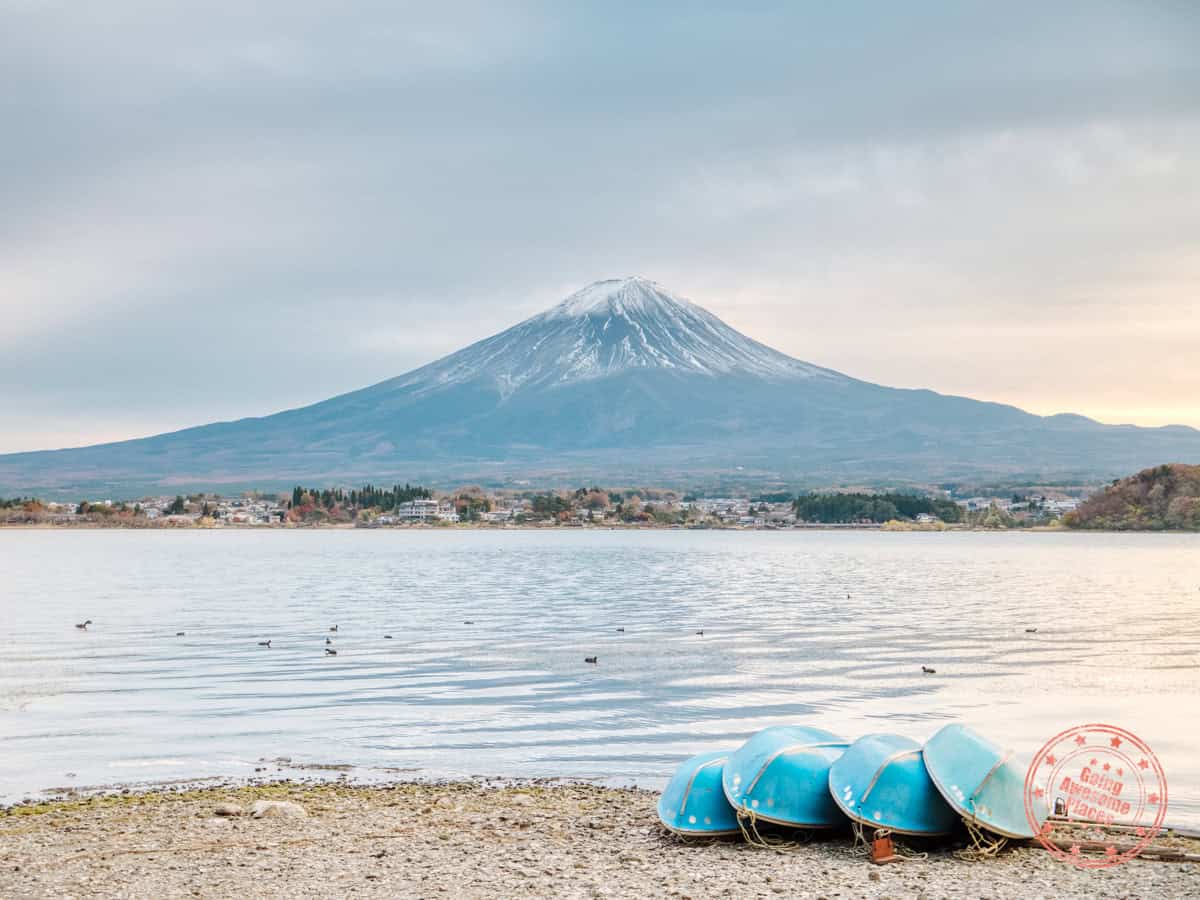
Chubu is one of the eight regions of Japan. It’s on the main island, Honshu, and at its center. Since it’s between two of the country’s most popular regions, Kanto and Kansai, we think it often gets overlooked.
People flock to cities like Tokyo, Kyoto, and Osaka, but forget that the Japanese Alps and Mt. Fuji are just as worth visiting.
If you’re looking for a city break, then Chubu isn’t the region for you. On the other hand, if you want to escape to Japan’s biggest mountains, see wild snow monkeys bathing in hot springs, and visit beautiful hanami spots, Chubu is the place to be!
Notable Hotels To Book In Chubu
Below are a collection of hotels that we recommend if you’re planning a trip to Chubu. We’ve made sure that we provide a range of properties depending on your budget and travel style.
GUEST HOUSE

Guesthouse Arakura
Located at the bottom of the hill below the Chureito Pagoda, this guesthouse is a great base for exploring Yamanashi. It’s rare to find larger properties in Japan that accommodate groups, so this guesthouse that can fit up to eight travelers is a real steal. The best part? There’s a family-run cafe downstairs.
GUEST HOUSE

Sengokuhara Shinanoki Ichinoyu
For anyone who wants to explore the coolest Mt. Fuji viewpoints and get into nature, but would rather stay somewhere a bit livelier, this traditional Japanese hotel, just 10 minutes’ drive from Gotemba Premium Outlets is a great option. Our favorite thing about their rooms is that they come with a private onsen! Sit back and relax after a long day shopping and craning your neck to get the best views of Mt. Fuji in the distance. They also have food on site, which we can confirm was super tasty!
LUXURY

AB Hotel Fuji
This modern hotel with spacious rooms is just 3.5 miles away from the Imamiya Tea Fields. In just 15 minutes, you’ll go from being in the city to being submerged in the quiet landscape of the green tea fields. It’s hard to compete with the hotel’s location. Did we mention there’s an onsen at the hotel too?
GUEST HOUSE

Shibu Onsen
This epic ryokan offers you a glimpse into an authentic Japanese home. The rooms are more spacious than most, which we loved. But nothing can top the location. Situated in the hot spring of Yamanouchi, this ryokan is home to some of the best onsens in town!
LUXURY

Taoya Kisoji Hotel
This hotel is just a few kilometers outside of Tsumago, so it’s a great place to stay if you want to hike the Magome Tsumago Trail, but you don’t want to have to worry about getting up super early to reach the trail. The hotel strikes a great balance between luxury and traditional Japanese architecture, and the stunning outdoor onsen pools are out of this world. It’s a great option for couples in need of some TLC.
Top Things To See In Chubu
 Image via Flickr by DanÅke Carlsson
Image via Flickr by DanÅke CarlssonSince Chubu isn’t such a well-known region of Japan, it’s harder to figure out where to go and how to structure your itinerary. To make it as easy as possible to wrap your head around, we’ve divided this guide into the different attractions you should see in some of the coolest prefectures in the region.
There are nine regions in Chubu. We won’t be able to cover them all, but we promise we haven’t missed anything worth traveling for!
Yamanashi Prefecture
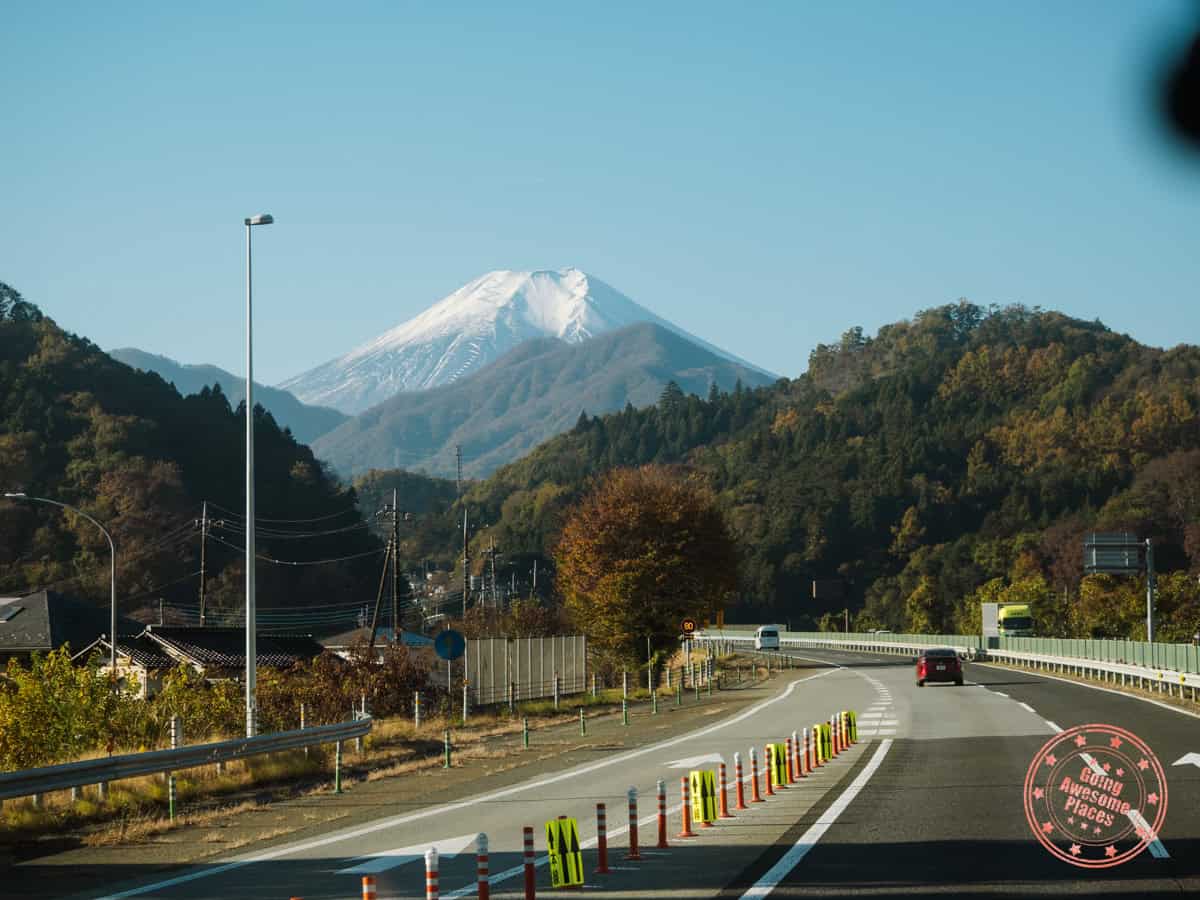
Yamanashi is definitely the most famous prefecture in the Chubu region, and that’s largely because it surrounds the foothills of Mt. Fuji and envelops part of the mountain so it’s a popular spot for anyone scouting out the best Mt. Fuji views.
GET THE BEST VIEWS OF MT. FUJI
Looking for more of the most breathtaking spots to see Japan’s iconic peak? Don’t miss our guide to the best views of Mt. Fuji!
The Best Places To See Mt. Fuji In JapanVisit The Picturesque Chureito Pagoda
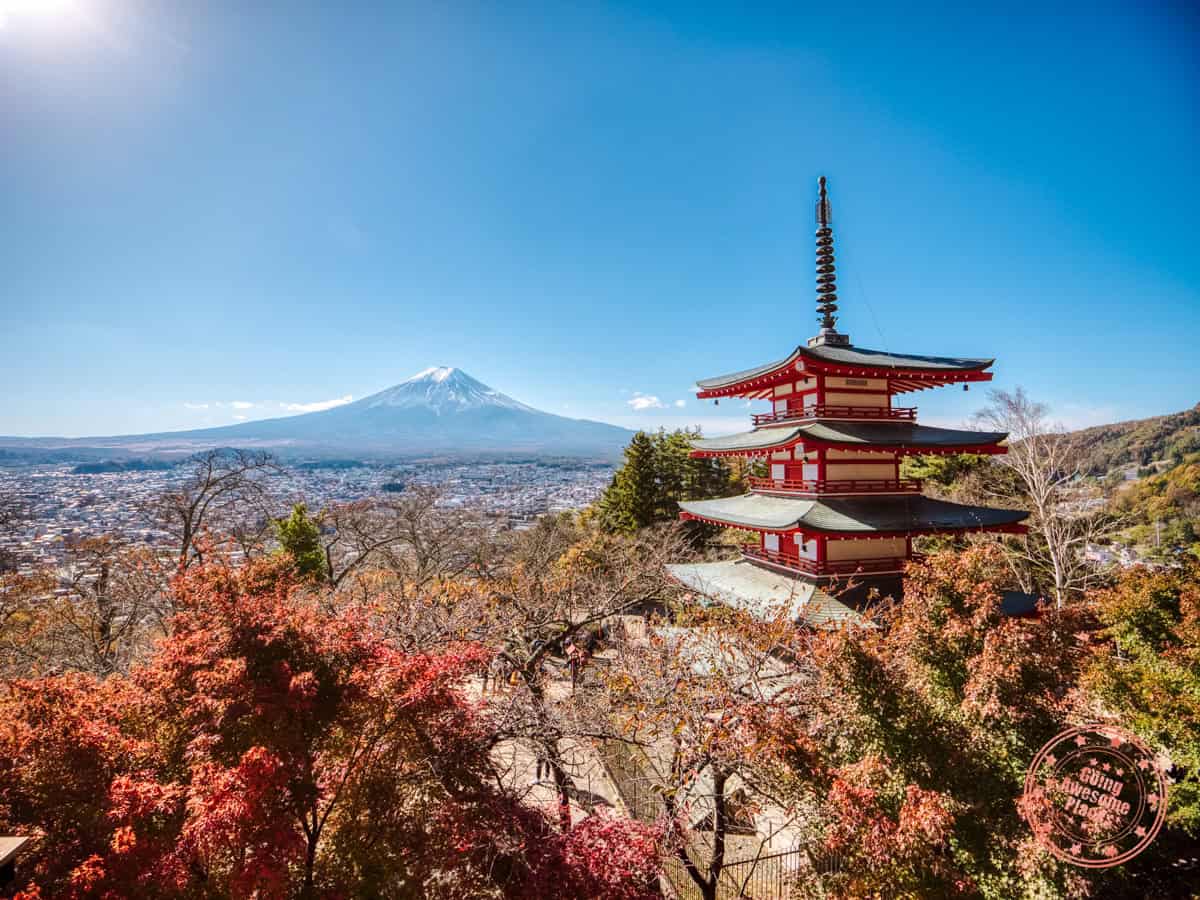
This epic five-story pagoda is one of our favorites in the whole of Japan. Because of the breathtaking views of Mt. Fuji in the distance, we’d even say it’s a hot contender against Kyoto’s stunning Yasaka Pagoda.
It was built alongside the Arakura Sengen Shrine in 1963 as a peace memorial, but unlike the shrine, which is at the bottom of the hill, you’ll have to work to reach the pagoda which is 400 steps away!
Our thighs were burning by the time we got to the top, but it was worth every aching muscle. We were super lucky to visit on a day with good visibility, so we could see the snow-capped summit of Mt. Fuji in all its glory. It’s no wonder the Chureito Pagoda made it onto our Best Places To See Mt. Fuji In Japan guide!
The pagoda is especially pretty during the Sakura season (from late March to mid-April), when the views of Mt. Fuji are framed by tree branches covered in a sea of pink petals. It even made it onto our Ultimate Guide to Cherry Blossoms in Japan.
Soak In The Views Of Mt. Fuji From Lake Kawaguchi
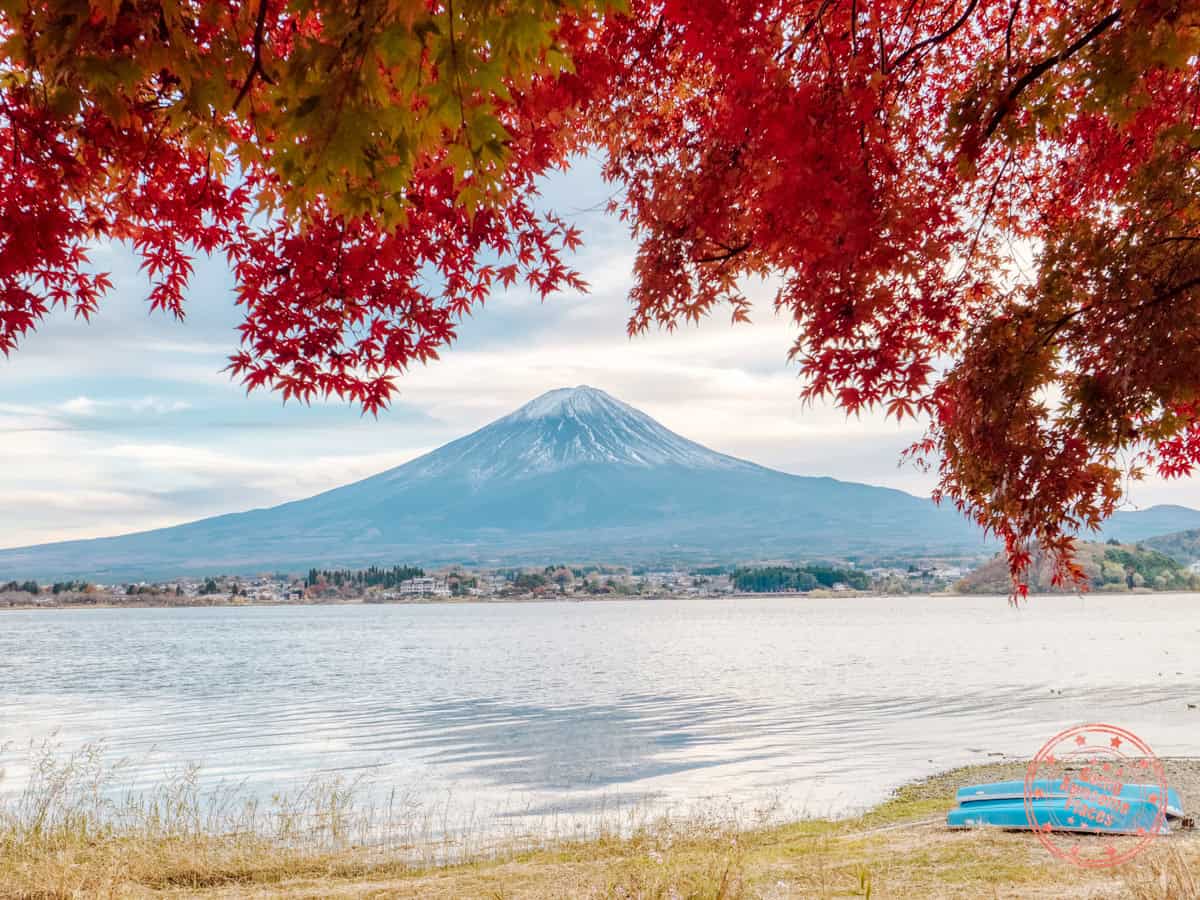
Also known as Lake Kawaguchiko, this epic lake is the most accessible of the Fuji Five Lakes. We think it’s an absolute must-see for anyone who’s in the Yamanashi Prefecture – you won’t find such amazing views of Mt. Fuji anywhere else!
There are a few ways to explore Lake Kawaguchi. The most exciting way is to rent a kayak and paddle out to the heart of the lake or rent a bike and pedal along the shore. But don’t worry if you’re not up for that, there is an extensive network of hiking trails around the lake which you can wander around instead.
If you visit the lake in spring, we suggest you head to Oishi Park, a lakeside park with stunning flower gardens and epic views of Mt. Fuji. We love it most in early summer when the lavender fields are in full bloom.
Featured In Our 10 Day Itinerary
We have all of the inside tips about our trip to Kawaguchiko including Oishi Park and Chureito Pagoda that you won’t want to miss.
10 Day Japan Itinerary For First TimersVisit The Stunning Ponds In Oshino Hakkai
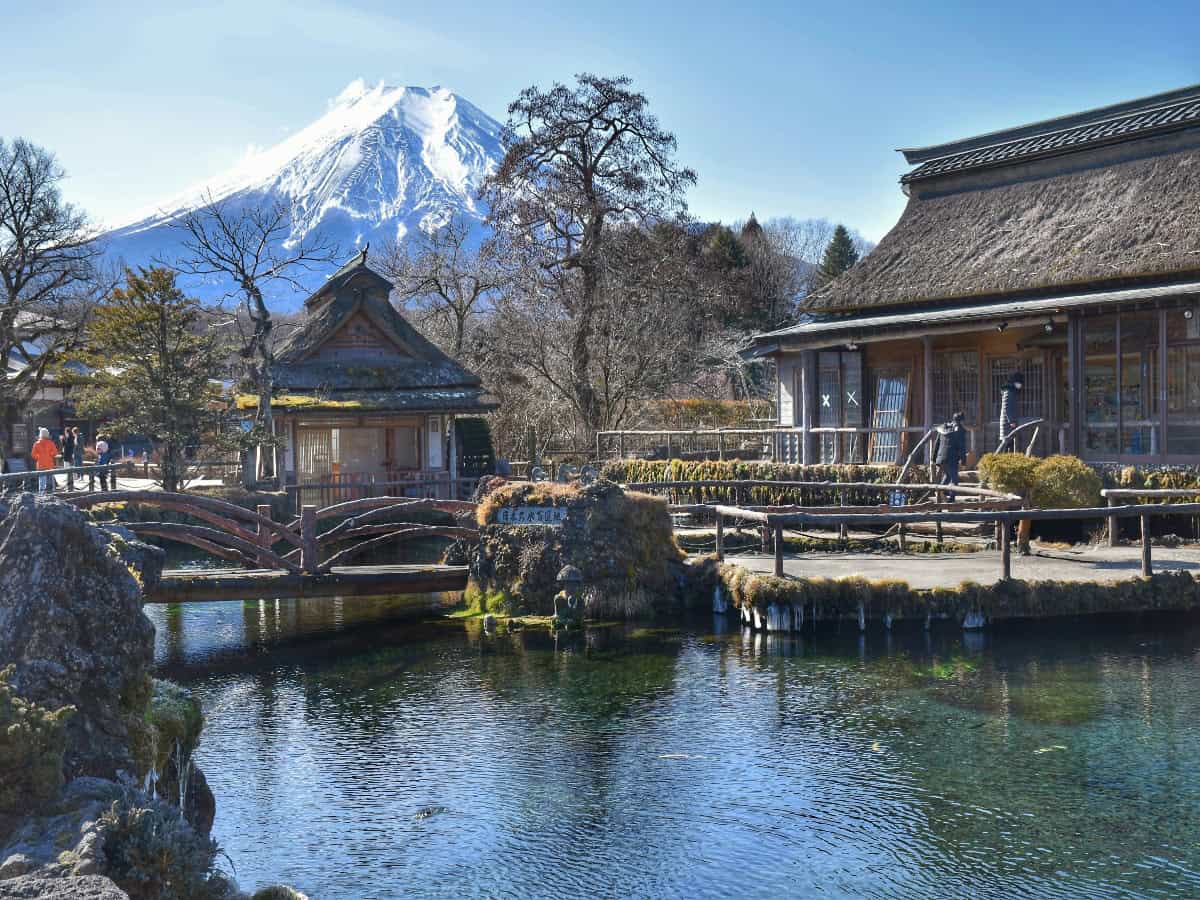 Image via Unsplash by Hong Ki Tang
Image via Unsplash by Hong Ki TangQuaint and charming, this little village is famous for its crystal-clear ponds that are fed by the Mt. Fuji snowmelt. The water takes 80 years to filter through the volcanic rock before it reaches the ponds, which is why it’s as clear as glass.
Our favorite pond in Oshino Hakkai is the one that you can drink from. We were a little skeptical at first, but once we saw how clear the water pouring out of the fountain next to the pond was, we knew it was safe to drink. We’re glad we did; it was super refreshing and helped cool us down on a hot day.
If you’re looking for a tour to see the ponds, check out this tour which includes Oshino Hakkai and Lake Kawaguchiko!
Did you know the village is where the sixth lake in the Mt. Fuji region used to be? It dried up hundreds of years ago, and today you’d never guess it was even there.
Apart from the breathtaking views of Mt. Fuji in the distance and the ponds, there are a few thatched cottages in the village. Head to the Hannoki Bayashi Shiryokan open-air museum and you’ll be able to go inside one. There are some pretty cool samurai weapons on display, so it’s worth checking out.
Shizuoka Prefecture
 Image via Flickr by fernando ikeda
Image via Flickr by fernando ikedaWe love Shizuoka Prefecture because it’s a wildly diverse prefecture. You can be strolling through remote tea fields one moment, to shopping in an enormous shopping mall the next.
Another great thing about it is that Mt. Fuji is almost always in sight when you’re in Shizuoka. Get ready for an adventure you’ll still be talking about years down the line!
Fujisan Hongu Sengen Taisha Shrine
 Image via Flickr by Izu navi
Image via Flickr by Izu naviBuilt at the foothills of Mt. Fuji more than a thousand years ago, this gorgeous shrine was built to protect the region from volcanic eruptions. It used to be the starting point for many climbers taking on the journey to the top of Mt. Fuji, but the old path no longer exists.
Sadly, a lot of the original buildings have been destroyed by earthquakes over the centuries, but the old Inner Shrine has an incredible two-story building that’s pretty old and is a great example of the unique Sengen architectural style.
The best time of year to visit the shrine is in spring, from late March to early April, when the 500 cherry trees on the temple grounds bloom. The park lights up in vibrant hues of pink that make the landscape feel even more fairytale-like.
Another curious event is the annual horseback archery contest, known as yabusame, that takes place here every 5th of May.
WANT MORE CHERRY BLOSSOMS?
If you’re obsessed with seeing chery blossoms in bloom, then Japan is the place to be. Learn all about Sakura season and when and where to be for the best views of the cherry blossoms!
The Ultimate Guide To Cherry Blossoms In JapanShop Until You Drop At Gotemba Premium Outlets
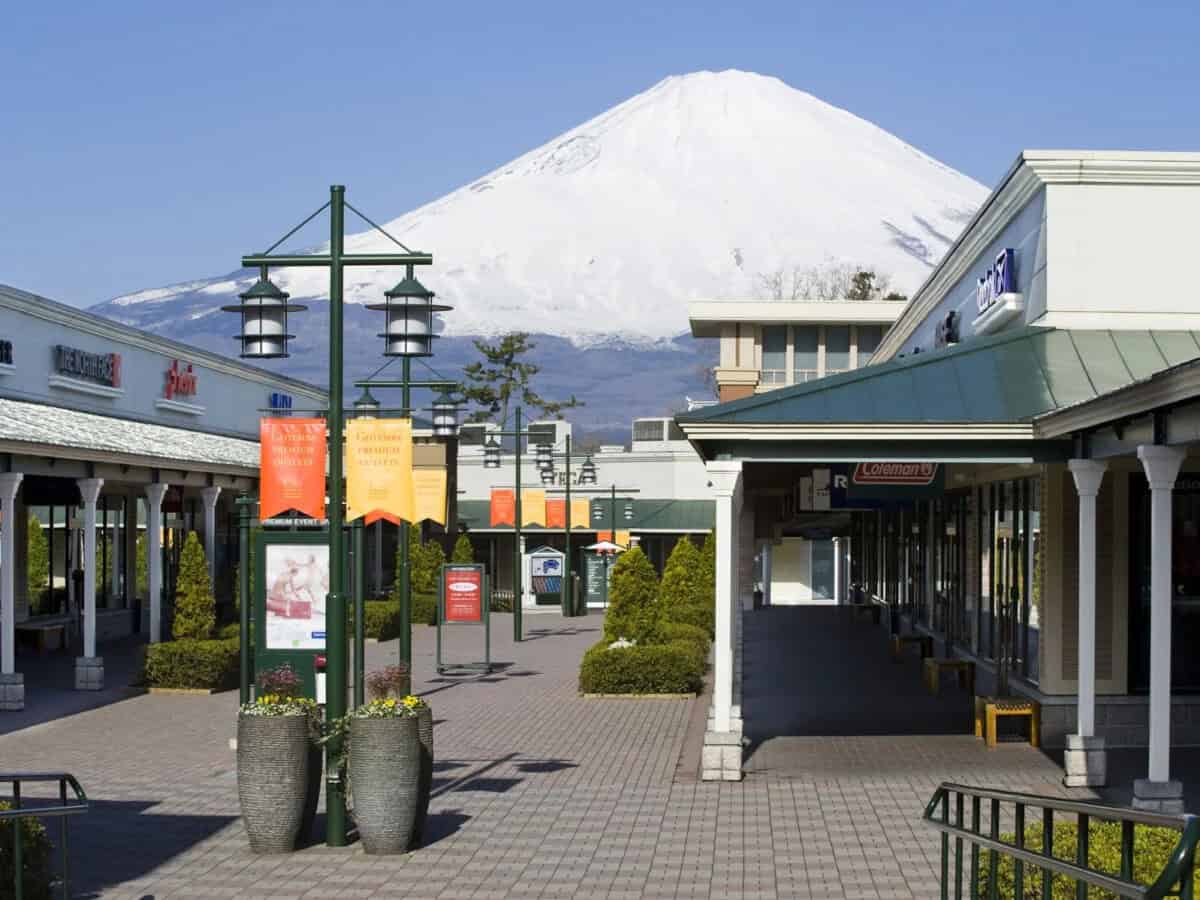 Image via exploreshizuoka.jp
Image via exploreshizuoka.jpWe’re not huge fans of shopping, and usually we’d try and avoid shopping malls like the plague. Even we couldn’t resist this one. Gotemba Premium Outlets is more than just a mall; it’s also one of the best Mt. Fuji viewpoints.
You can see the enormous, snowy summit of Mt. Fuji from every corner of the mall, which adds a whole load of excitement to a shopping trip. It’s great for any city folk who want to see Mt. Fuji in all its glory but would rather not have to venture into nature.
There are 290 shops in the mall too, so you’ll be spoilt for choice if you really are just there for the shopping.
If you’re looking for a day filled with shopping, this day tour from Tokyo is perfect for you.
Enjoy The Peace At Shiraito Falls
 Image via Flickr by Alexandre H. Sato
Image via Flickr by Alexandre H. SatoWe were really surprised at how quiet it was at Shiraito Falls. Somehow, this absolute gem has managed to avoid being added onto the tourist trail, so you can enjoy the waterfall and views of Mt. Fuji without having to battle with the crowds!
The waterfall’s name is curious too, the word shiraito translates to silk yarn and refers to the fall’s wispy appearance that looks a lot like strands of silk. It’s not the tallest waterfall we’ve seen in Japan, but what makes it so impressive is that it stretches for 150 meters along an amphitheater-shaped cliff.
For the best views of the falls and Mt. Fuji, walk along the boardwalk and find the cleverly positioned viewing points. If you want to you can even walk down the 100 or so steps to reach the bottom of the waterfall.
Visit Kawazu Seven Waterfalls (Nanaderu)
 Image via Flickr by Agustin Rafael Reyes
Image via Flickr by Agustin Rafael ReyesThe Kawazu Seven Waterfalls are a collection of waterfalls that run down a lush green valley in the mountains of the Izu Peninsula, not far from Kawazu Town. Odaru, which literally means ‘large waterfall’, is the tallest of them all and plummets a towering 30 meters. The smallest is Kanidaru, which is just 2 meters tall.
There’s a trail that connects all the waterfalls and weaves through the dense forest vegetation. It’s the only trail, so you can’t miss it!
One thing we weren’t expecting was the statues along the trail. Some of them depict famous Japanese characters, like the heroine from the short story Izu no Odoriko.
While you’re in the area, you should also check out the Kawazu Nanadaru Loop Bridge. A drive down this insane spiral bridge on the Japan National Route 414 isn’t for anyone who easily gets car sick!
Imamiya Tea Fields
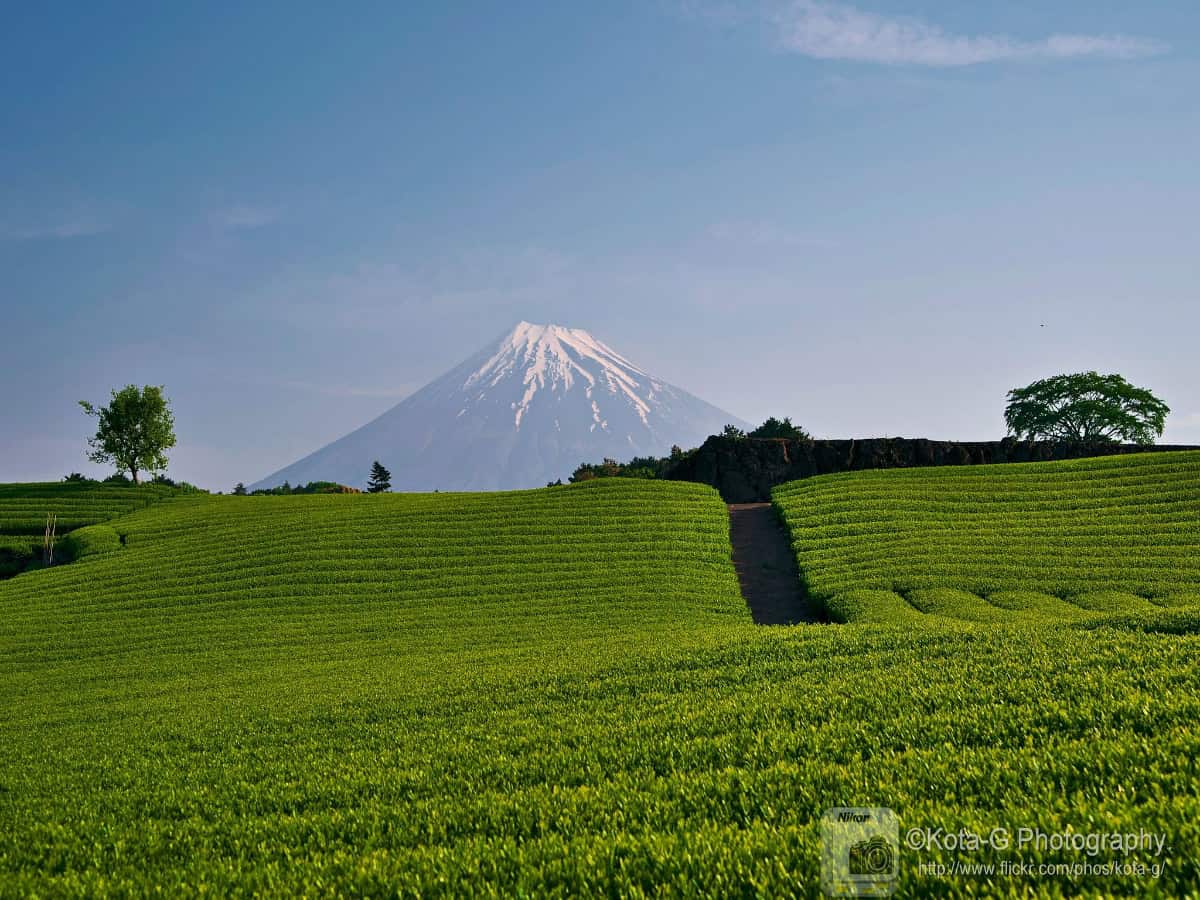 Image via Flickr by koji.tachibana
Image via Flickr by koji.tachibanaRiddled with gorgeous green tea fields, this area is super different from the other landscapes you’ll come across in the Shizuoka Prefecture. As you probably already know, tea is an important part of Japanese culture. Their elaborate tea ceremonies are as old as time (they can be traced as far back as the 9th century!), and no trip to Chubu would be complete without seeing where the tea is grown.
We’ve seen tea fields before in our many trips to Asia, but the Imamiya Tea Fields blew us away. The views of Mt. Fuji in the backdrop took the landscape up a level.
You’ll need to rent a car to visit the tea fields, as there isn’t a way to reach them by public transport. There are also loads of fields to choose from, but we suggest you head to the Obuchi Sasaba tea farm.
BEST CAR RENTAL COUPON CODES
Using the right coupon codes can save you a ton of money.
SAVE ON CAR RENTALSToyama Prefecture
 Image via Flickr by Jura Tone
Image via Flickr by Jura ToneToyama is our favorite Chubu prefecture for adventure. Outdoorsy travelers who want to explore the region’s nature will love Toyama, but there’s not much that will appeal to anyone looking for a city break.
Get ready to immerse yourself in Japan’s most stunning nature!
Ride The Kurobe Gorge Railway Through The Kurobe Gorge
 Image via Flickr by Teruhide Tomori
Image via Flickr by Teruhide TomoriThis awesome gorge cuts through the rugged mountains of the Northern Japan Alps. The deep ravine is surrounded by thick forests and the trickling sounds of the Kurobe River. It’s one of the deepest gorges in Japan, and by far the prettiest.
It’s hard to believe, but the steep cliffs of the gorge aren’t untouched. Every so often the sound of a train on the Kurobe Gorge Railway cuts through the landscape. The old train runs from Unazuki and Keyakidaira. It’s not a super long journey, it’s just 20 kilometers long, but the 80-minute ride is packed with scenic views and travels over more than 20 vertigo-inducing bridges!
There are a few stops along the way, so you can jump off and explore the towns and landscape. We went in autumn and we were so glad we did. Even though it was a bit chillier than it would have been in summer, the autumn colors that swept over the gorge’s forest were enough to make up for the weather.
The train runs from April through to November. Make sure you check out their official website to find the railway schedule and book your tickets.
Before you board the train, make sure you check out the views of the Shin Yamabiko Bridge (two giant red bridges), which span the Kurobe River and can be seen from Unazuki Station.
Shirakawago And Gokayama
 Image via Flickr by paddy_c.
Image via Flickr by paddy_c.If you’re a history buff or culture fanatic, you’re going to fall head over heels for Shirakawago and Gokayama. Nestled into the mountains, the villages in the area were cut off from the rest of the world for a long time. Protected from modernization and a quickly changing world, they feel stuck in time and ancient.
The coolest thing about them is the Gassho-zukuri style houses with their steep thatched roofs. They’re one of a kind in Japan – seriously, you won’t find them anywhere else. You might also be wondering how people survived if they were so cut off, which is a great question! Learn more about these houses on this unique bus tour!
The villagers sustained themselves by cultivating mulberry trees and rearing silkworms, and not much has changed since the 11th century when they were first set up.
There are three villages in Shirakawago and Gokayama. They are Ogimachi, Ainokura, and Suganuma. They’re all part of a UNESCO World Heritage Site, so it’s a cool place to visit if you want to tick another UNESCO site off your bucket list.
The Tateyama Kurobe Alpine Route
 Image via Flickr by Andyleung A1
Image via Flickr by Andyleung A1Visiting the Japanese Alps was a highlight of our time in Japan, and we think that the Tateyama Kurobe Alpine Route is the best way to see as much of it as possible in a short time!
The road through the mountains starts in Dentetsu-Toyama and ends in Nagano (yes, that is in a whole other prefecture). You’ll journey 90 kilometers, passing by some of the country’s tallest mountains and gaining an insane amount of elevation along the way. Starting at an altitude of 475 meters, the road reaches a staggering 2,450 meters at its tallest point – it’s no wonder this spot is known as ‘the roof of Japan’.
One of the coolest parts of the journey is traveling up Mount Tateyama, or Mount Tate, which is one of Japan’s three sacred mountains (along with Mount Fuji and Mount Hakusan).
Because of the snow, the road is only open from April through to November (the exact dates vary year to year). We suggest you don’t leave it until November to go, just in case there’s some unexpected snowfall and the road gets closed.
The hardest part will be deciding how to explore the Tateyama Kurobe Alpine Route. You can do it by bus, do chunks of it by cable car, take the train, or even hike it!
Nagano Prefecture
 Image via Flickr by Alex Usov
Image via Flickr by Alex UsovNestled in the heart of the Japanese Alps, Nagano Prefecture is a haven for nature lovers and outdoor adventurers. Known for its world-class ski resorts, historic temples like Zenko-ji, and picturesque mountain towns such as Matsumoto and Kamikochi, Nagano offers year-round appeal. Whether you’re hiking alpine trails in summer or soaking in an onsen after a day on the slopes, this region blends stunning scenery with rich cultural experiences.
Hang Out With The Yamanouchi Hot Spring Monkeys
 Image via Flickr by Trey Ratcliff
Image via Flickr by Trey RatcliffThis gorgeous mountain town north of Nagano City is famous for its hot springs and adorable snow monkeys. If you want to mix it up and combine a luxury TLC getaway with scenery and wildlife, then Yamanouchi is the place to be.
Wondering which onsens are worth checking out? The best is Shibu Onsen and Yudanaka Onsen.
A 10-minute bus ride from town and you’ll reach the Snow Monkey Park. The snow monkeys that live here love the hot springs as much as the locals do, so they spend all day lazing around and bathing in the warm water – it’s super cute.
Another thing you have to do while you’re in town is take a hike to the Sekai Heiwa Kannon, an imposing 25-meter-tall World Peace Buddha statue that is lit up every evening. There is also a giant peace bell that you can ring to send prayers for peace all over the world.
Visit The Old Matsumoto Castle
 Image via Flickr by olgabt
Image via Flickr by olgabtThis stunning original castle was one of the few in the country to survive the post-feudal ages. Most were destroyed in attacks or fires. We love how traditional the castle felt, it was definitely leveled up by the black wainscoting that made it feel dark and eerie.
The outer moat of the castle complex is surrounded by cherry blossom trees, which, along with the mountain peaks in the distance, make it extra scenic in the spring.
If you’re a history fanatic, it’s worth going the extra mile and checking out the interior of the castle. Whilst most castles in Japan have been rebuilt with concrete, the interior of Matsumoto Castle is still wooden, which makes it extra charming.
Book A Ski Holiday To Karuizawa
 Image via Flickr by Shin OGATA
Image via Flickr by Shin OGATAIf you’re a beginner or you want to try out skiing or snowboarding for the first time, then the Karuizawa Prince Ski Resort is the perfect winter destination.
The resort has 10 fun and beginner-friendly ski slopes, so you can give the sport a good go without feeling overwhelmed or out of your depth. If you need more guidance or on-hands help from a pro, book yourself onto this tour at Karuizawa Prince Ski Resort.
Japan is known for its powdery and thick snow, which was even given its own nickname by the snowboarding community – JAPOW! So what are you waiting for? Pack your winter layers and get ready for an epic winter holiday in Chubu’s snowy mountains.
TRAVELING TO JAPAN IN THE WINTER
Planning a trip to Japan in winter? Check out our winter itinerary for Sapporo during the snow festival for the best seasonal experiences!
1 Week Sapporo Winter ItineraryHike The Magome Tsumago Trail In The Kiso Valley
 Image via Flickr by Carmine Memoli
Image via Flickr by Carmine MemoliThe postal towns in the Kiso Valley are part of the old Nakasendo Highway. It was an ancient route that connected Edo (modern-day Tokyo) to Kyoto during the Edo Period. Travelers would stop to rest in the little postal towns, restocking on resources and resting their tired feet.
Who knows quite how many towns there once were, but now just 69 remain. Of those, the most well-preserved and beautiful are the quaint villages of Magome-juku and Tsumago-juku. Incredibly, the towns are some 400 years old.
There’s a trail that connects the two postal towns and is a popular way to get a glimpse of what it would have been like walking the old highway in centuries gone by. It’s called the Magome Tsumago Trail. It’s a doable eight kilometers long in total, so you can easily do it in a day.
Start in Magome, a gorgeous little village where you can still see the old stables where travelers would leave their horses to rest and old inns that would have been where they slept. From there, set off on the trail that runs through the forest and is dotted with tea houses along the way. Warning – there is a hill at the start, but don’t worry, it’s not super steep.
It took us about 6 hours to walk the trail and reach Tsumago, but that’s mainly because we stopped a lot along the way to take in the views and rest at tea houses.
Fukui Prefecture
 Image via Flickr by Teruhide Tomori
Image via Flickr by Teruhide TomoriFukui straddles the Sea of Japan and is a prefecture that not many travelers carve out time to see. We were enticed by the prefecture’s rugged cliffs and a remarkable temple complex that you’ll have to read on to find out about!
Visit The Stunning Tojinbo Cliffs
 Image via Flickr by iio33333
Image via Flickr by iio33333Ever heard of the Giant Causeway in Ireland? Well, this is their Japanese cousin. Situated along the Sea of Japan, these dramatic cliffs are made up of natural column stones. Formed 12 to 13 million years ago by volcanic activity, these kinds of column stones have only been found in two other places on the planet.
We spent a while walking along the top of the cliffs when we arrived, which can get up to 30 meters high, so be ready to fight off the vertigo!
It was super cool because we could see as far as Oshima Island to the northwest and Mt. Hakusan to the east from the top.
Once we had explored the Tojinbo Cliffs on foot, we decided to hop on a boat tour to see them from up close. The tour was only about half an hour long, but it was so cool! We got to see some of the most peculiar rock formations, like the Lion Rock and Candle Rock and got a real sense of just how tall each of the rock columns is.
Eiheiji Temple
 Image via Flickr by JTB USA
Image via Flickr by JTB USAThe breathtaking Eiheiji Temple is hidden amongst the cedar forests in the mountains above Fukui City. Founded in 1244 by Dogen, a Buddhist who played a huge role in bringing the religion over from China, it’s still one of the most important Zen Buddist temples in the country today.
One of the most impressive things about Eiheiji Temple is the sheer size of the complex. It has 70 buildings that are connected by covered walkways and protect the paths from the thick layers of snow that fall in Fukui during the winter.
It’s still an active monastery today, so if you’re lucky, you might even see a few monks wandering through the complex. One of our favorite parts of the temple, even though we could only check it out from the outside, was the monk’s quarters. We tried to catch glimpses of where the monks eat and pray – it was super exciting!
Nagoya Prefecture
 Image via Flickr by ProfessorBeekums
Image via Flickr by ProfessorBeekumsNagoya had to make it onto our Chubu guide because it’s the home of Ghibli Park! It’s also the home of a pretty impressive castle complex.
There’s not a whole lot to do in the area, so we wouldn’t put it at the top of your itinerary, but if you’re on a longer trip and you’ve got some time to kill, it’s worth a visit.
Nagoya Castle
 Image via Flickr by TokyoViews
Image via Flickr by TokyoViews Okay, so just to be completely honest from the get-go, the Nagoya Castle you’ll see today isn’t the original. Sadly, the old Edo Period castle was destroyed, like most of Japan’s traditional castles, in the air raids of 1945.
The castle you see today is a reconstruction from 1959, but it’s still pretty cool (otherwise we wouldn’t have added it to our Chubu itinerary). Even though it’s not the original, the castle was built to be similar to the original, and you still get a real sense of what the old castle would have been like.
We loved being able to go inside the castle palace and see the painted fusuma sliding doors. It just shows how much attention to detail there is in Japan.
In the spring it’s a popular hanami spot too thanks to all the cherry trees on the temple grounds.
Ghibli Park
 Image via Flickr by Martina Sgorlon
Image via Flickr by Martina SgorlonIt’s hard to think about Japan without thinking about Studio Ghibli. Founded in 1985 by Hayao Miyazaki and Isao Takahata, the studio’s heart-warming films have spiked people’s imaginations all over the world.
The great mind behind lots of the studio’s best films is Hayao Miyazaki, who grew up during World War II and added lots of secret anti-war messages to the films because of it.
Did you know for example that the film ‘Castle in the Sky’ contains a hidden message written in Morse code?
Ghibli Park isn’t really a theme park, even though there are a few kid’s rides. It’s more of a submersive experience where you’re thrown into the worlds of different Ghibli movies.
There are five areas in total (our favorite was the Dondoko Forest). You can learn more about the park and check out ticket prices on their official website.
A heads up that these tickets are quite competitive to get. Make sure to study the release schedule of the tickets for your dates and make sure to also practice getting these tickets for an earlier date so you know exactly how it works.
Activities We Recommend You Booking
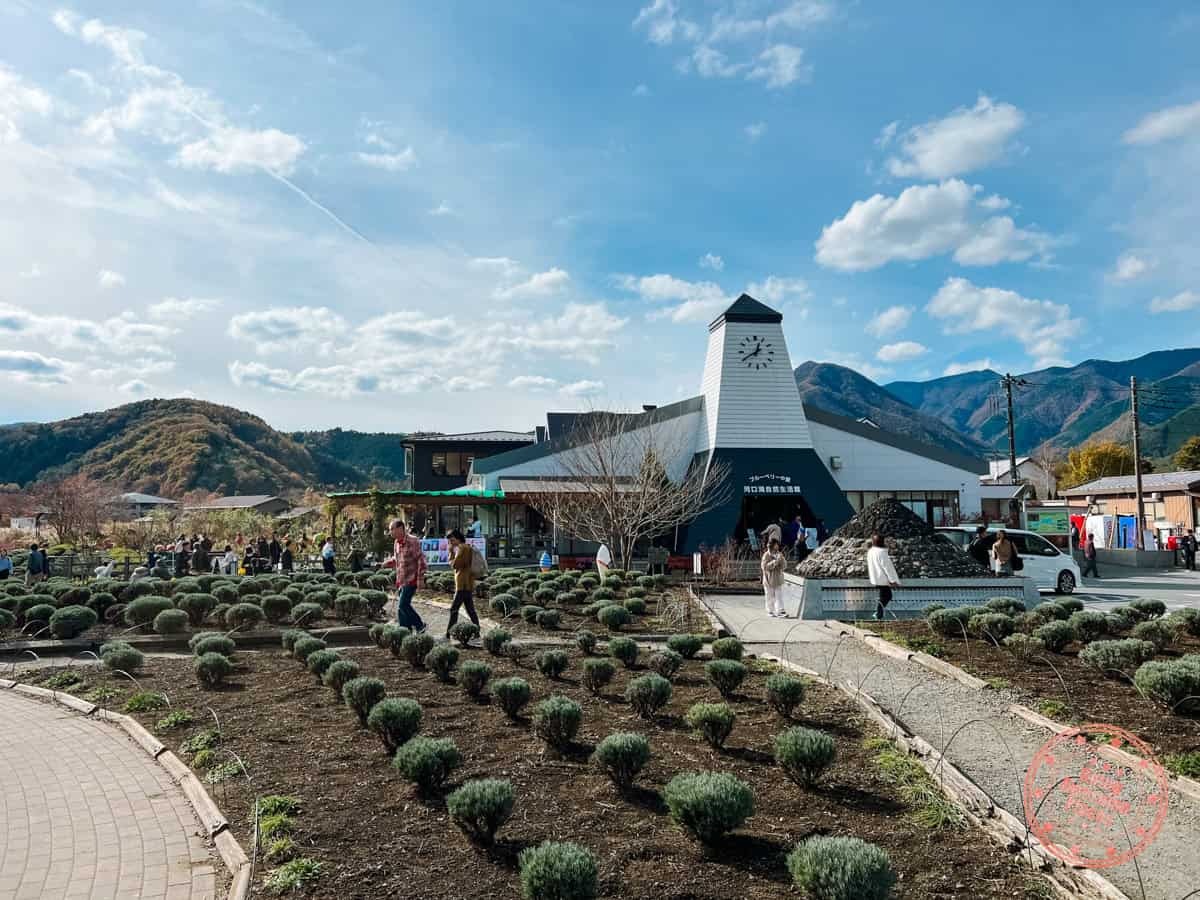
- Don’t worry if you’re not actually staying in the Chubu region, you can still explore some of the area’s coolest destinations on this day trip tour from Tokyo! Wander around Lake Kawaguchi, ride on a ropeway, and visit the famous ponds in Oshino Hakkai. As well as a day packed with epic views of Mt. Fuji, you’ll also get to try your hand at matcha making!
- Not sure our last tour from Tokyo is for you? Then check out this tour which includes Oshino Hakkai and Lake Kawaguchiko too! On top of that, your guide will take you to Arakurayama Sengen Park and Saiko Iyashi-no-Sato Nenba (another traditional Japanese village famed for its breathtaking views of Mt. Fuji). The tour packs a lot in, which is why we think it’s a great option for anyone who wants to see as many of Chubu’s highlights as possible in just a day.
- This day tour from Tokyo is a great option if you want to enjoy a day of scenic shopping without having to worry about renting a car. As well as a trip to the mall, you’ll get to visit Arakurayama Sengen Park and Oishi Park.
- Shirakawa-go and Gokayama are popular Chubu attractions, so don’t miss the chance to see them and book this tour as soon as possible! You’ll get to see the best thatched houses and learn about the local history from your guide. On top of that, you’ll get to spend some time exploring by yourself, which we always think is a plus.
- Trying skiing or snowboarding for the very first time? Then book yourself onto this tour at Karuizawa Prince Ski Resort and learn from a friendly guide who’ll keep you safe and help you grow your confidence on the slopes.
- If you want to save yourself the headache of having to do loads of planning, then book this 2-day trip of the Tateyama Kurobe Alpine Route from Nagoya! You’ll have more time to stop and enjoy the landscape and really soak in the beauty of the Japanese Alps. Plus, going with a guide rather than a public bus means you can stop along the way if you find a spot you want to check out.
- Not sure that you’re ready to take on the Magome to Tsumago Trail by yourself? Then join this tour that includes pick-up from Matsumoto, Kokusai, or Nagano. It’s a full-day tour, which includes lots of insight from your local tour guide! Be aware that they start the hike in Tsumago and walk from there to Magome, so there will be more uphill involved.
Go Deeper In Chubu

This guide is a great way to get an overall sense of what Chubu is like and start brainstorming where to go, but nothing beats our detailed guides. Check them out!
- Lots of the coolest viewpoints of Mt. Fuji are in the Yamanashi Prefecture. If you’re chasing the best photos of this iconic mountain, then you have to read our Best Places To See Mt. Fuji In Japan guide. We’ve got loads of tips and tricks in there that will help you find the best photography spots as well as everything you need to know about visibility (the summit of this 12,389-foot peak can be pretty elusive).
- Chubu’s awesome attractions even made it onto our Ultimate Guide To Cherry Blossoms In Japan! We’ve got insider knowledge about the cherry blossom festival at the Chureito Pagoda, as well as juicy tips for how to predict the Sakura season and where to stay by each attraction.
- Want to try ordering like a local on your next trip to Japan? Then check out our awesome Rosetta Stone Japanese guide where we uncover whether the Rosetta Stone App is any good for learning Japanese. Spoiler alert – it is!
- The Art Of Trip Planning – Although this article isn’t specific to Chubu, it’s a useful guide for travelers or anyone who hasn’t traveled in a while and isn’t sure where to start. It can be pretty scary planning your first (or hundredth) trip. There’s a lot to think about and you’re probably worried you’ll forget something important, like booking your hotel! Don’t worry – with this guide, you’ll be an expert in no time.
- Want to start preparing for your trip ahead of time? Then read our Best Apps For Japan Travel guide. We’ve got loads of juicy tips and tricks that will help make your trip extra easy. From language apps that can help overcome any language barrier problems to navigation apps that will keep you from getting lost.
General Travel Tips For Chubu
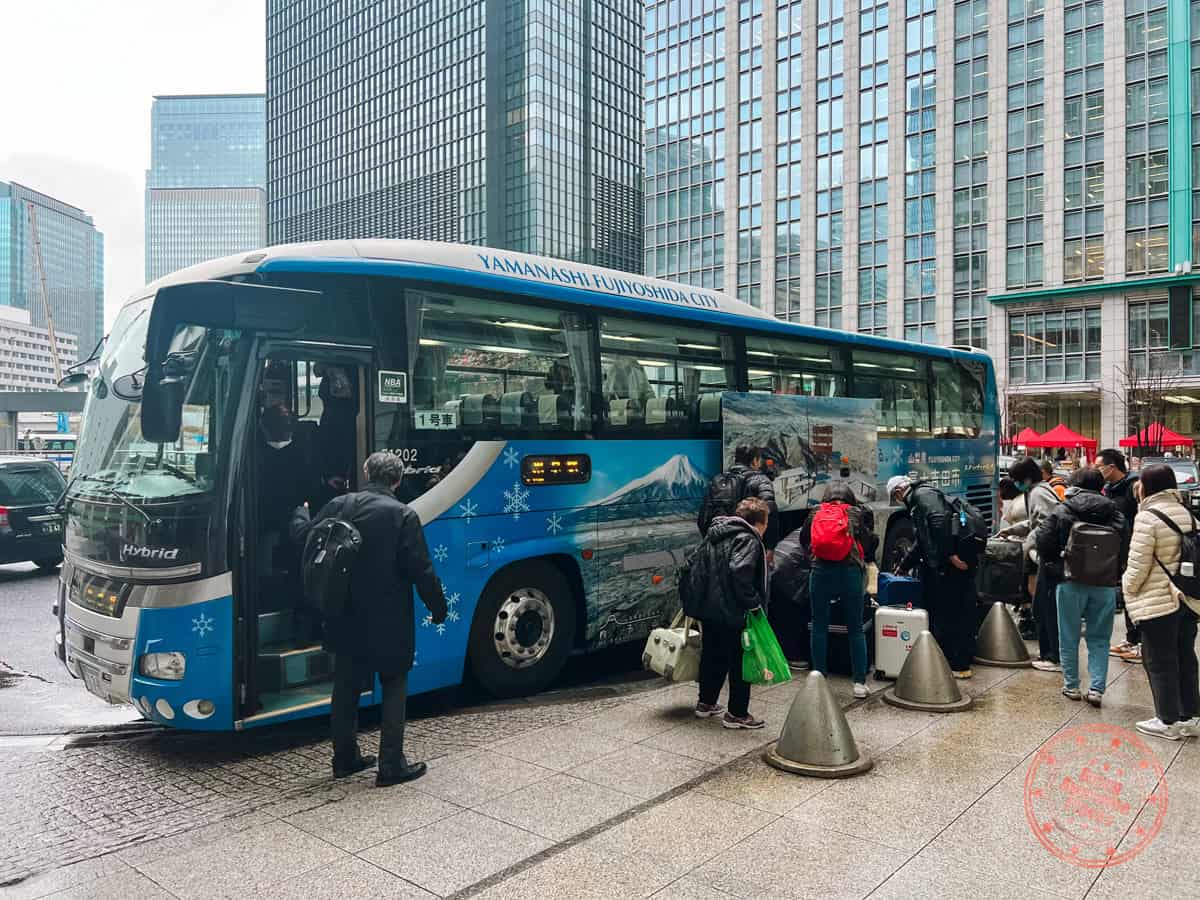
There’s always so much to try and figure out about a place before you feel ready to travel there, but there never seems to be enough time to research everything! Don’t panic, we’re here to help. Our handy general travel tips section has everything you need to know about getting around Chubu, when to visit, and mistakes to avoid.
We want to make sure your trip is as easy as possible, so let’s dive right in!
When is the best time to go to Chubu?
Each region of Japan has a unique climate, which is worth considering before you book your trip. There’s nothing worse than spending your holiday curled up in your hotel because it’s raining non-stop!
If you’re hoping to see as much sunshine as possible and you’re trying to miss the rain completely, then head to Chubu in May. It’s the month with the least rainfall and the most sunny days! It’s also pretty warm, with temperatures ranging around 20 degrees Celsius.
We don’t recommend going in winter unless you’ve got proper winter coats and a good pair of gloves, as it gets pretty chilly! Come spring the region starts to heat up, but it’s not until May that it gets properly warm again.
Summer is surprisingly rainy in Chubu, with July being the rainiest month of the year. It’s worth taking that into account if you were hoping to hit some summer heat. Unlike other regions of Japan, October is less rainy than the summer months, so it’s a great option if you want to enjoy the autumn colors without getting soaked!
What you shouldn’t miss in Chubu:
Chubu is an awesome region of Japan that has very distinct prefectures, each with their own characters and attractions. I’d be pushed to choose just one or two to prioritize, but if I had to, I’d say put Yamanashi and Shizuoka at the top of your list.
The reason why is that they’re both at the foothills of Mt. Fuji, so you get the added perk of Mt. Fuji views wherever you go. Some of the coolest places that you have to visit in Yamanashi are Oshino Hakkai and the Chureito Pagoda. In the Shizuoka prefecture, make sure you don’t miss Shiraito Falls and the Imamiya Tea Fields.
Going on a longer trip and you have enough time to visit some more prefectures? Great! Then go on a train ride through the Kurobe Gorge, ride along the Tateyama Kurobe Alpine Route, and hang out with the adorable macaques in the Snow Monkey Park in Yamanouchi.
Looking to do something a bit out of the ordinary? Book a ski holiday to Karuizawa Prince Ski Resort and visit the postal towns in the Kiso Valley.
Top tips for traveling in Chubu:
- Head to Shiraito Falls in autumn for the best photography opportunity – Nestled in the Fuji-Hakone-Izu Park, Shiraito Falls is surrounded by a dense forest of red and orange leaves in the autumn that will get any photographer’s heart racing!
- Hoping to see the Sakura season in full swing, then visit these spots – Spring is a special time in Japan. The pace of life slows down as everyone comes together in the country’s parks and temples to enjoy hanami, the practice of stopping to admire the transient beauty of the blooming cherry trees. For the best Sakura experience, visit Chureito Pagoda and Fujisan Hongu Sengen Taisha Shrine. Some of Chubu’s landmarks are so beautiful in the Sakura season that they’ve even made it onto our Ultimate Guide To Cherry Blossoms In Japan.
- Visiting the Kurobe Gorge? Then stay in Unazuki for a night – Don’t rush your trip to the Kurobe Gorge if you can help it. The area is also known for its luxurious hot springs, which are in the town of Unazuki Onsen (where the train ride starts). Spend a day relaxing in the spring’s healing waters before climbing aboard for the adventure of a lifetime.
- Get your boat tour tickets around the Tojinbo Cliffs on their official website – The official Tojinbo sightseeing boat tours are half an hour long, which is long enough to explore the jagged coastline and soak in the views. You can check out their schedule and ticket prices on their official website.
How to get around Chubu:
We’ve said it before and we’ll say it again – Japan has great public transport. There’s a huge network of trains across the country, and each city is blessed with its own metro, subway, train lines, and buses. It’s so reliable and easy to use that there are rarely times when you’ll need to rent a car in Chubu.
So, what will you need to use the public transport in Chubu? To get around Chubu you’ll need an IC Card. There are a few on the market but our top pick is the Suica Card because it’s super versatile. You can use it on every mode of public transport in the city and even for trains to more remote towns and attractions.
Don’t be fooled by the day ticket options, we don’t recommend them because they tend to work out more expensive in the long run (even if you’re only there for a weekend).
Google Maps is a great app to use for navigating around Japan. It has up-to-date information about transport schedules and will let you know if there are any major disruptions that will affect your journey. We’ve used it every time we’ve visited and never had any problems, we use it when we’re exploring cities on foot too.
Not a big fan of public transport and looking for the quickest way to get home? Lucky for you, you can use familiar apps like Uber and DiDi in Chubu’s cities. There’s also the taxi app GO. Make sure you select the Uber Taxi option on the Uber app to cut costs!
Common travel mistakes:
- Rent a car if you want to visit Shiraito Falls and the Imamiya Tea Fields – Lots of people make the mistake of assuming that they’ll be able to take a tour to Shiraito Falls and the Imamiya Tea Fields. Because they’re less popular than other spots (although we can’t figure out why!), there aren’t really any tours to either place. But don’t worry, driving is super safe in Japan, and renting a car is simple.
- A word about the Karuizawa Prince Ski Resort – While this ski and snowboard resort is great for beginner,s it’s not our top pick for any experienced travelers who are winter sport experts. There aren’t a whole heap of slope,s and the levels are generally quite low so you’d probably get bored pretty quickly.
- Start the trail in Magome not Tsumago to avoid hiking extra hills – Lots of tours start the Magome Tsumago Trail in Tsumago, but we decided to do it the other way around because when we were looking at the elevation map we realized we could cut out some pretty big hills by doing that! We wanted to let you in on our little discovery.
- Remember that Ghibli Park isn’t a theme park – If you’re looking for a day of scary roller coaster rides and adrenaline-inducing adventures then you’re much better off going to somewhere like Universal Studios in Osaka.
Packing Guide
Because the weather is so different in each season in Chubu we’ve made a general packing list, which you can use for spring and summer, and added a few essentials you should bring along if you’re visiting in winter (especially if you’re planning on being in the mountains or going on a ski holiday):
- Comfortable shoes: Chubu is a region with loads of outdoor attractions that you’ll have to hike to, so pack your comfiest trainers or even some lightweight hiking boots.
- Pack your clothes according to the season: Chubu has very distinct seasons, so make sure you bring extra layers in winter and autumn. In the spring and summer, you can get away with bringing less luggage.
- Bring a lightweight raincoat: Remember that October is the rainiest month of the year in Japan, but in Chubu the rainiest month is July! Don’t let the summer rain or the occasional surprise rainy day can catch you off guard any month of the year.
- Bring hand sanitizer: It’s not unusual for there to be no soap in public and restaurant toilets in Japan.
- Bring your best camera: You’re about to make memories you’ll want to remember for a lifetime, so make sure you capture them in high quality! You might want to consider bringing other accessories like selfie sticks and camera hood lenses too.
- Remember to pack a travel adapter: You’ll need a two-pronged Type A for Japan, so check your plugs to see if you need to get an adapter ahead of your trip.
- Get some Japanese Yen ready before your trip: It’s always a good idea to pack some cash in the local currency before your trip, in case you need cash to pay for your transport from the airport, or you find yourself in a sticky situation.
- Check ahead of time that you can use your bank card to take out Japanese Yen whilst you’re abroad without being charged hefty fees! If not, plan ahead and bring all the travel money you think you’ll need. In our 10-day Japan itinerary, we estimated it costs about $147 per person per day to travel in Japan.
- Check if you need a Visa ahead of your trip! Most countries don’t need a Visa for a short holiday in Japan, but make sure you check the unique requirements for your country, so you don’t run into any unexpected problems. You can find out more on the Ministry of Foreign Affairs of Japan website.
Visiting in winter? Add these to your backpack:
- Snow boots: Bring along a pair of cozy snow boots to keep your feet protected from the chilly cold! There’s nothing more upsetting than having cold and wet feet when you’re on holiday.
- Pack a good pair of mittens or gloves: We really recommend going beyond the usual cheap, knitted gloves and spending a bit more money on a pair of sealskinz gloves. They aren’t the cheapest, but you really do get your money’s worth. We’ve had ours for years now! It’s very likely you’ll be making loads of snowballs while you’re in Chubu, and if you’re going to the region’s awesome ski resort some proper gloves are a must.
- Pack warm gear for the snow: Because a lot of Chubu’s best attractions are in the mountains, it gets really snowy and cold. Don’t let the cold get to your bones and ruin your holiday, bring along some good thermals to wear under other layers and don’t forget to pack a thick winter coat.
Run Away From Your Responsibilities And Head To Chubu
Chubu is the mainland’s best region to escape to. Hide away from the masses of visitors that flock to cities like Tokyo and Kyoto and get up close with Japan’s raw nature instead. Sail around the Tojinbo Cliffs, admire Mt. Fuji from the shore of Lake Kawaguchi, or hike the Magome Tsumago Trail.
We could have hidden away in the hot springs in Yamanouchi forever, especially since we were sharing them with snow monkeys. Not sure hot springs are your thing? Then bask in the autumn colors in the Kurobe Gorge and journey through the Japanese Alps. Whatever way you like to run away from your responsibilities, Chubu has it.
Chubu Frequently Asked Questions
What is the main city in Chubu?
Chubu’s main city is Nagoya. It’s also the fourth-biggest city in the country, so it’s pretty massive! Despite that, we don’t really recommend it as a travel destination. We think there’s more to see further afield, in Chubu’s more rural areas.
Is Mt. Fuji in Chubu?
Yes, the immense and mesmerizing Mt. Fuji is in Chubu! It’s one of the main reasons travelers are drawn to this region of Japan, and it’s definitely kept us coming back again and again.
Mt. Fuji is near the Pacific coast, and it straddles the boundaries of Shizuoka and Yamanashi. That’s why a lot of the attractions in these two prefectures are also great spots for Mt. Fuji views. Amazingly, it isn’t the only big mountain in Chubu either. The Japanese Alps are also in the region.
What prefectures are in the Chubu region?
There are nine prefectures overall in Chubu. These are Aichi Prefecture, Fukui Prefecture, Gifu Prefecture, Ishikawa Prefecture, Nagano Prefecture, Niigata Prefecture, Shizuoka Prefecture, Toyama Prefecture, and Yamanashi Prefecture. We know we haven’t added them all to this itinerary, but trust us – we’ve added all the attractions in the region that are worth visiting!
It’s a huge region, so seeing all the prefectures (especially in a short trip) is pretty much impossible. Instead of overloading you with everything, we’ve narrowed it down to all the best bits.
What are some interesting facts about Chubu?
Here’s a little history for all the curious minds out there. More than a thousand years ago the region wasn’t divided into prefectures. Instead, the Chubu region was called Gokishichido and it encompassed three areas, known as Hokuriku, Koshin’etsu, and Tokai.
It wasn’t until the Meiji Period that the country was divided into regions, each with its own prefectures.
Did you know that it’s home to some of Japan’s oldest castles? There are just 12 castles in the country that were built before the Edo Period and have survived until today. Two of them are right here in Chubu! They’re the Matsumoto Castle and the Inuyama Castle.
What does Chau mean in Japanese?
‘Chau’ is an interesting Japanese suffix that is used when someone has done something by accident. Usually, it alludes to some level of surprise at what the person has done, and possibly regret. It’s sort of similar to the expression ‘You won’t believe what I’ve gone and done’!
If you want to learn more Japanese so you can pick up bits of what the people around you are saying then check out our guide about using the Rosetta Stone app to learn the language.
Japan Trip Planning Essentials And Discounts
If you’re in the middle of booking your trip to Japan, here are the most important places you need to go to book:

- JR Pass – The two most reliable places we always check are JRailPass and JRPass. If you are taking long distance Shinkansen across multiple region, get the full JR Pass. If you’re focusing on one specific area, you only need a JR regional pass. The official booking platform is Smart-Ex.
- Shinkansen – The JR Pass prices have gone up and for many of you, it’ll make more sense to book tickets individually. The secret is that when you buy your Shinkansen tickets through Klook offers special vouchers for Don Quijote and BIC when booking. Their tickets are super easy to redeem as well. Right now, use code SKS10OFF to save $10 USD off.
- Hotels/Ryokans – In Japan, the best website for accommodations, hands down is Agoda. When we’ve compared them against Booking, Agoda consistently came out cheaper.
- Tours – While Viator and GetYourGuide are our go-to’s, Klook and KKDay are much popular in Asia so it’s always worth comparing across all of them to make sure you get the best price. With Klook, use code GOINGAWESOMEPLACES to save up to 10% on your first booking.
- Pocket Wifi – While we do love eSIMs, having a pocket wifi is great for sharing data with a large group. The most popular is NinjaWifi which is easy to pick up at the airport. Use code AWESOME15 to save 15% (automatically applied). Alternatives are offered by JRPass and JRailPass but they aren’t as cheap. For a more global solution, consider Solis and PokeFi.
- eSIM – The best one is Airalo. Save money by getting the Japan region eSIM and use referral code WILLIA9500 to get $3 USD credit on your first purchase. From now to Feb 29, the 10GB package is half price as well! Ubigi is another one that we’ve had success with where they uniquely offer 5G coverage. Use code AWESOME10 to save 10% on your first order.
- Car Rental – Big companies like Budget, Avis, and Enterprise operate in Japan but they’re usually the most expensive. The best companies are the local Japanese ones such as Toyota Rentacar, Nippon Rentacar, Orix Rentacar, Nissan Rentacar, and Times Car Rental. To make things easier, use Rentalcars and Klook to compare prices all in one place. Don’t forget, you need an IDP to drive in Japan so get one before you leave your home country.
- Learn Japanese – It helps to know even a bit of the language before you go. Start your learning with Rosetta Stone Japanese.
- Cash or credit – Cash is still very important to have in Japan but when you use credit cards, make sure you’re not getting charged those extra exchange rate fees. The best card right now is the Wise Multi-Currency Card which is actually a debit card where you can convert at favorable rates beforehand. This cuts out any sneaky transaction fees.
- Travel Insurance – Make sure you’re covered in case something happens. Get quotes from HeyMondo where booking through our link gets you 5% off automatically and if you’re from Canada, get quotes from RATESDOTCA.
- Shopping – Discovering Don Quijote is a quintessential part of the Japan experience. The secret for tax-free shopping is that they have a coupon that can help you save 10% off + additional 5% off if you spend ¥10,000 or more.









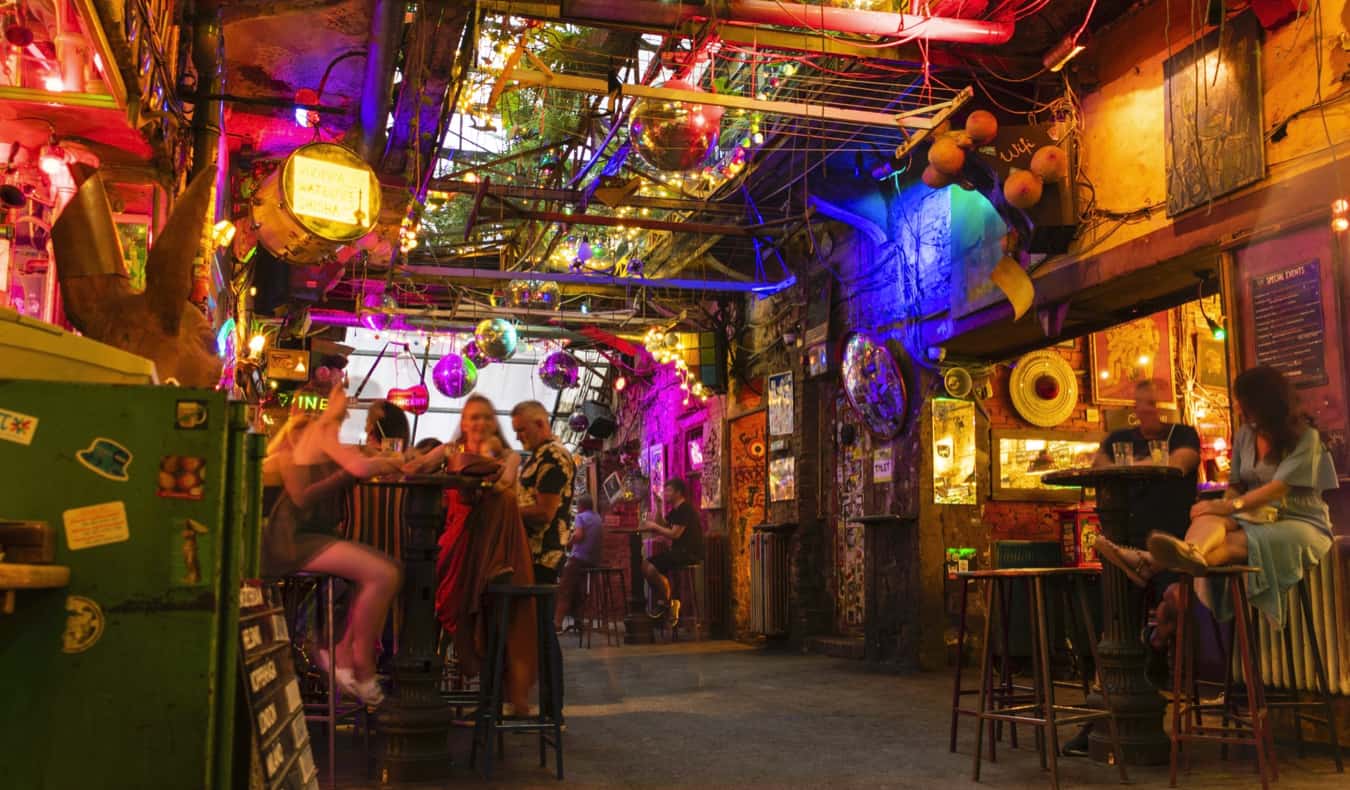

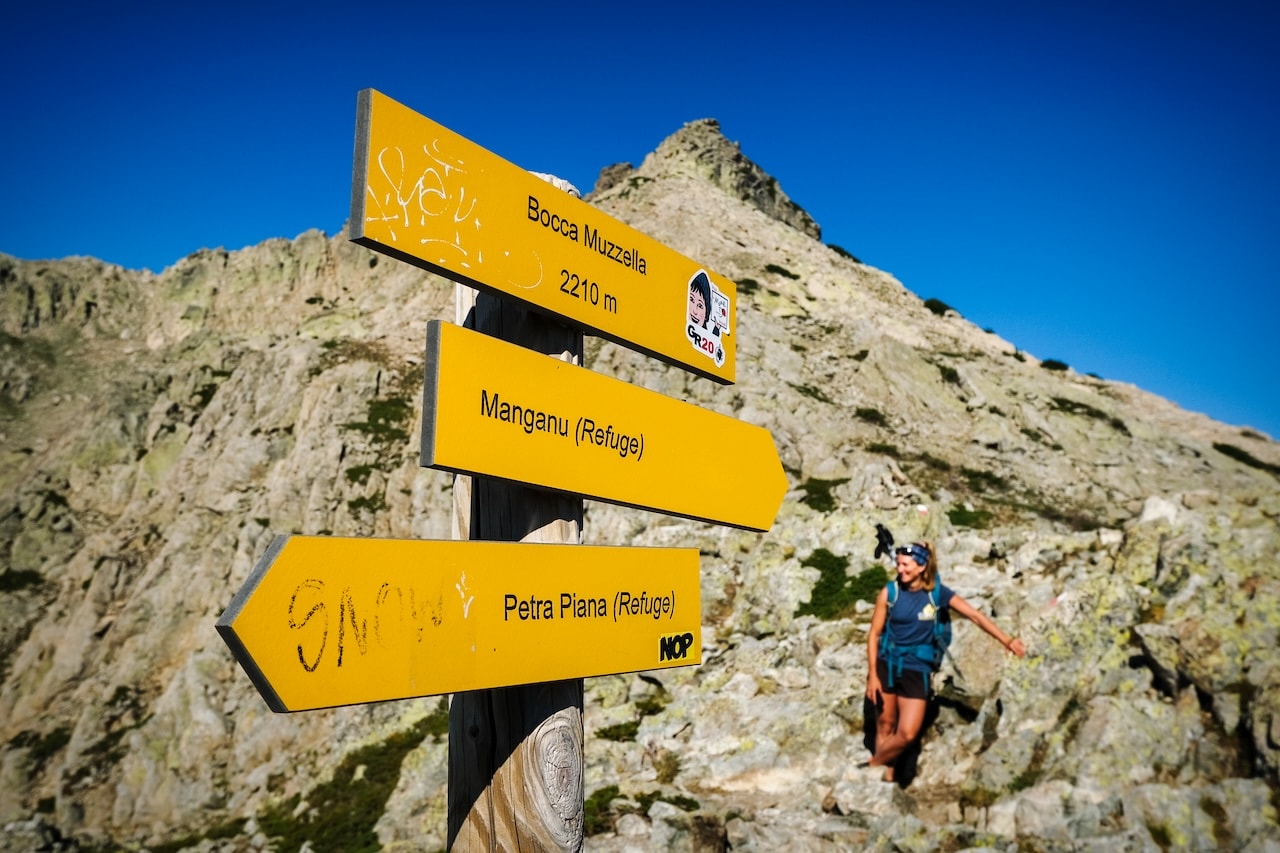




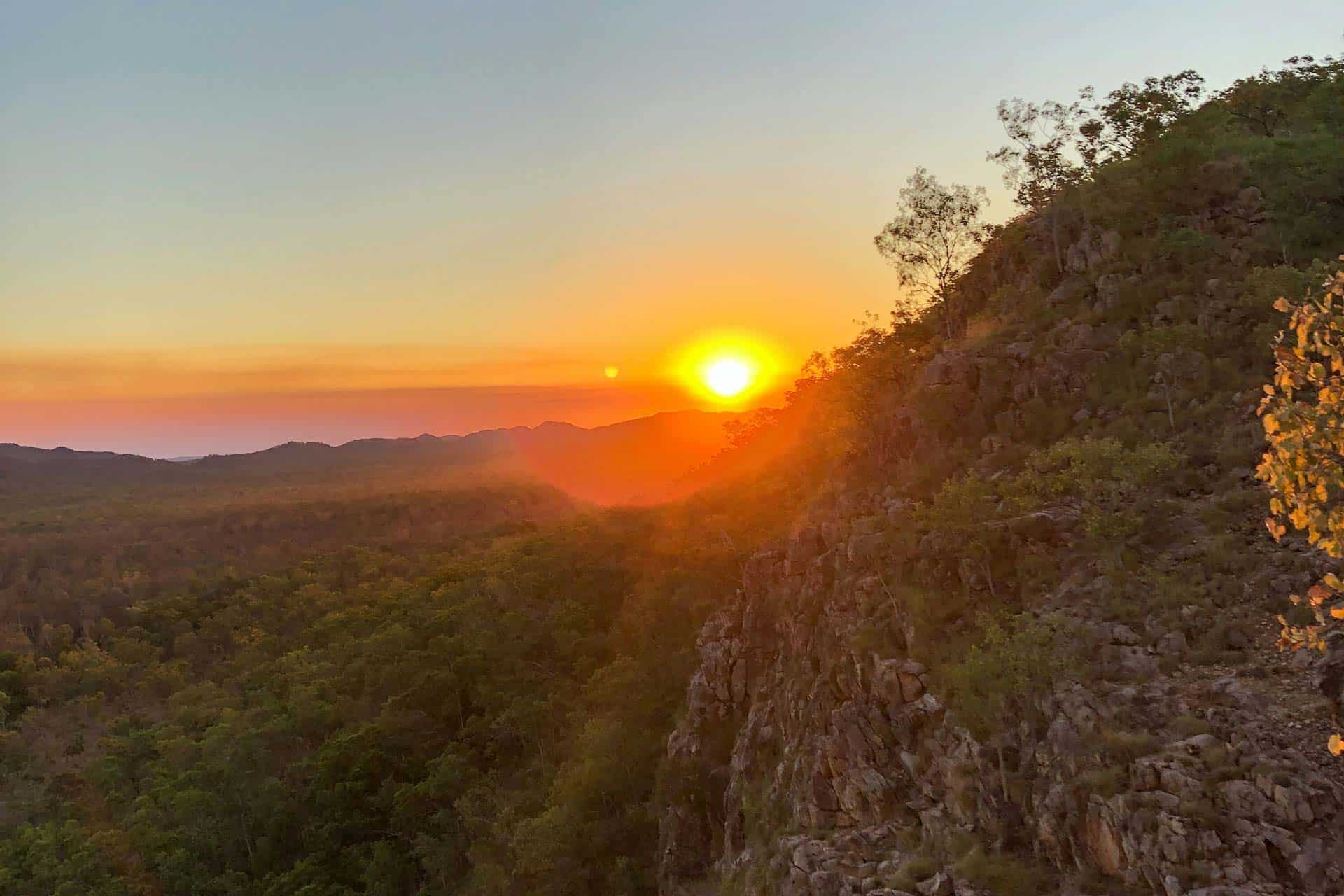
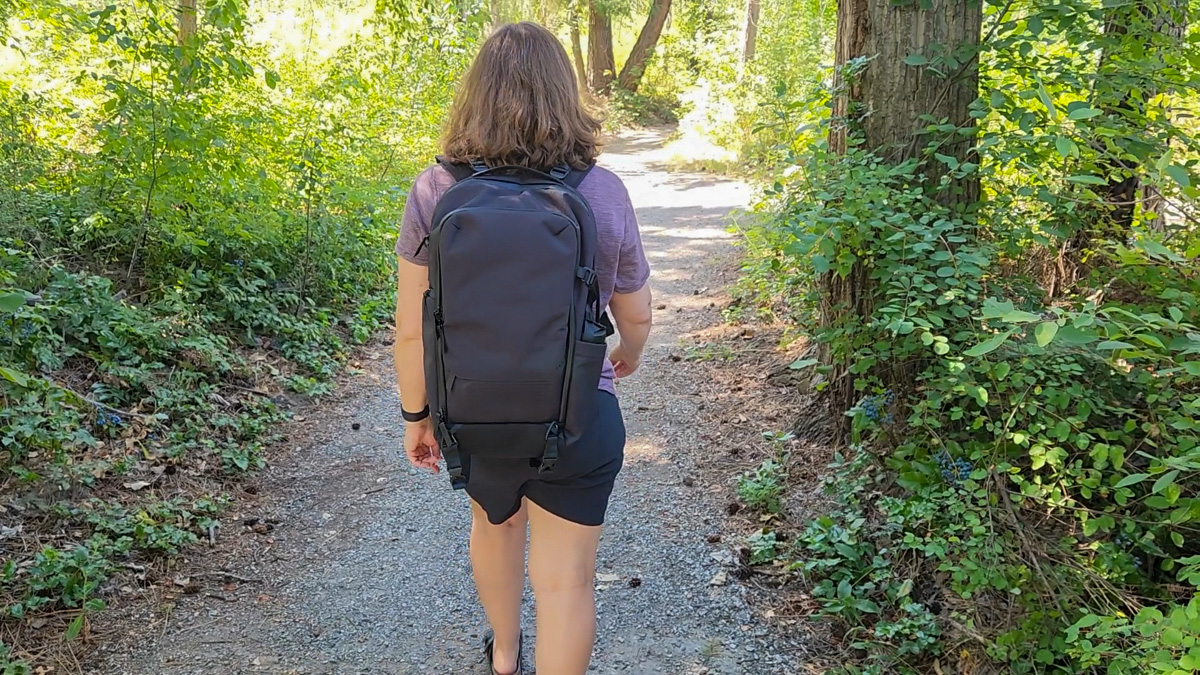

 English (US) ·
English (US) ·